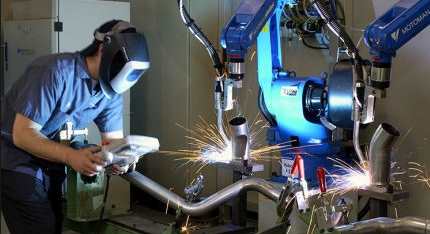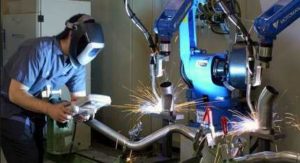The Human Element of Robotic Process Automation

According to many large scale manufacturers, special interest groups, and economists, robotic process automation (technology that allows a robot to observe human actions and replicate them) is destined to be the backbone of tomorrow’s economy. To front end workers and unions however, RPA is viewed with a great deal more trepidation and a great deal less excitement. While it’s easy to admit that both views have equal merit, the reality is that the potential implications of the common adoption of RPA is widely misunderstood; RPA is in no way poised to eliminate millions of manufacturing jobs around the world. In fact, the rollout of RPA marks the beginning of a new age of opportunities for human workers in terms of the implementation, oversight, and maintenance of this technology.
Regardless of which side of the fence you land on, RPA technology will gain a foothold in the manufacturing industry, there are still several key human-centric factors to consider when determining whether RPA makes sense for a particular sector. Here are the human elements associated with the implementation and maintenance of RPA in the workplace.
Prioritize Your Return on Investment
Even to the inexperienced, there are certain benefits associated with RPA that immediately come to mind; namely, increased efficiencies, higher and consistent quality of goods, and reliable and predictable completion of work.
While all of the enumerated benefits associated with robotic process automation is a foregone conclusion, the marginal increase in productivity and quality may not be a justification for the cost of investment. For that reason, it’s important that any business owner has a firm grasp on what their expect as a return on their investment before implementing RPA. Since these investments comprise vast sums of capital, analysis of the ROI must be performed continually to not only validate current investments, but also justify further investments. For example, if the expected product quality is marginal or if the target industry needed worry about compliance violations, it might not be worth the time to implement RPA even though the resulting product would be better than its current iteration.
Human Input and Oversight
Yes, robotic process automation is the answer to workplace optimization, but current robotic technology plays but a supportive role; true optimization cannot be achieved without human input and oversight. Unfortunately, RPA is not something that can be implemented out of the box; like human workers, the robots must be shown every task, every process that it must complete, and that’s where humans come in. Developing and perfecting these processes takes considerable time and effort to be sure, but so too does the task of identifying which processes should be automated in order to maximize efficiency. On a large enough scale, this itself is a monumental task and one that requires a significant amount of human capital to keep everything running the way it should. Remember, getting an RPA system up and running is far from a one and done scenario; processes must be continuously evaluated by technicians in order to identify areas to improve, and the lion’s share of parsing through the resulting analytical data will invariably fall squarely onto the shoulders of a living, breathing human.
Initiate Change and Education Early
It should be pointed out that a fair portion of the population is not overly concerned with the implementation of RPA. Having said that, there are undoubtedly groups of workers, perhaps those who feel they may be too close to retirement to be taken seriously as an applicant or those reluctant transition to a different career, and to be frank, that’s to be expected. The most important thing that an employer considering the implementation of RPA can do is to begin educating their employees about the technology, and how it will impact their role.
Employers must be transparent. Even the least engaged employees will conclude that RPA will consume part of his or her job, and that is a reality that must be acknowledged by all parties. It is important however to reinforce the point that RPA is designed to only take over the most mundane, repetitive tasks which will actually open the door for receptive workers to develop new skills and take on new roles within the company. In spite of everything, there will be turnover, be it the moment the impending RPA rollout is announced or during the transition period. In all cases, it behooves the good employer to ensure that resources be made available to make sure that employees be given adequate training and time to adjust to the new work environment.
There is no arguing that implementing RPA can be a veritable boon for a company, but the human element is still needed to implement and oversee this technology and ensure the expected ROI can be achieved.






